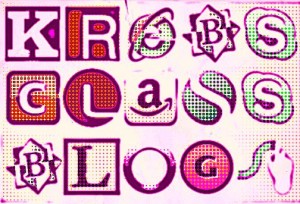Over the past few months I have delighted in meeting so many excellent educators through their tweets and blogs. So many people contributing their genius out in the digital world! A few are amazing writers, but many of us are not. But you know what? I’ve found it doesn’t matter!
Is writing the most important contribution people make in their lives? No, of course not. Does it have to be the most important mark you leave on the Internet? No, it doesn’t. You don’t have to be a great writer to be effective.
Your contribution is not a polished five-paragraph essay or creative writing assignment. Your job when you join the digital conversation, should you choose to accept it, is to create, contribute, connect, collaborate and curate.
All those things can be done without Pulitzer prize-winning prose! Let me tell you about an example that happened in my class recently. Nicole, along with Leah and Kim, created a silly video as they tried out a new tool called Animoto. She wrote a quick paragraph explaining a contest related to the video. (And they painstakingly checked it for proper English conventions, I might add.) Here is her blog post.
Next, she sent it out to the world using Twitter and the hashtag #comments4kids. Fourteen seventh graders, Mrs. Sigler’s first graders, and a sophomore Spanish class accepted her challenge to write a story about the video she created. You can read the stories here. Look at the number of lives Nicole touched. Look at the people who practiced literacy as a result of Nicole’s 21st century contributions.
Finally, we created a digital prize on Xtranormal. You can watch it here and at the beginning of this post.
Was Nicole’s greatest contribution her writing? No. She wrote, but she also did much more. Look at all the things she accomplished…
- created–the initial video and digital prize
- contributed–added her blog post and made it a contest for the world
- connected–sent out the link to the world
- collaborated–worked with Leah and Kim in the classroom, worked with me on Xtranormal
- curated–this is an elusive one. Nicole and all of us need to not become overwhelmed with the wealth available to us online. Nicole didn’t just launch a random monkey blog post and leave it. She organized her online world. Even though she was busy, she approved the comments, read the stories, determined the winner, and followed-up to complete the task.
I am so proud of her and my other student bloggers. They are becoming 21st century learners and using technology to create, contribute, connect, collaborate, and curate.
Is there a benefit in doing those things online, as opposed to doing them in the regular classroom? Yes, there are many reasons that I am just learning about. One thing I have become convinced about is the fact that we have the chance to be accepted in a new way. The bullies and the bullied, the straight-As and the strugglers, the cool and the nerdy, the introverted and extroverted, the acne-ed and the brace-faced, the too thin and the too round. It doesn’t matter what we look like or how we are perceived on our campuses. Online we can all be on a level playing field. We can all make valuable contributions. Even the weakest writers can do the work of the 21st century when they share their own genius.

Don’t get me wrong. I know we need great literacy skills; we should not be lazy about literacy development in ourselves or our students. More than ever, in this digital age, we need to be strategic readers and effective writers. (At the least, everyone can proofread their own writing or ask a friend or teacher to help.) However, I believe blogging, joining the conversation, 21st century teaching and learning–whatever you want to call it–is about doing those five C’s: Create! Contribute! Connect! Collaborate! Curate!
So, whether student or teacher, you can join the conversation. In fact, as Angela Maiers says, “You are a genius, and the world demands your contribution!” Please join in the conversation. We need you.
Will you please leave a comment telling how you were inspired to join the conversation?



